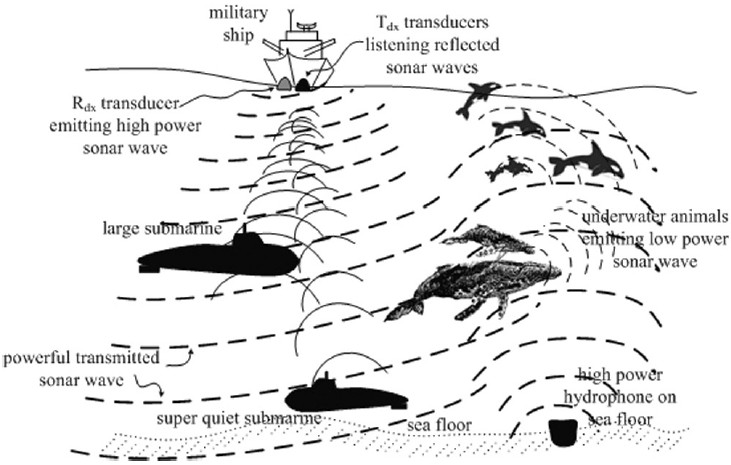This week I find myself at a conference/trade show co-sponsored by the Institute of Electrical and Electronics Engineers (IEEE) and the Marine Technology Society (MTS) focused on the ocean. This event is bringing together professionals involved in design and fabrication of marine communication systems, autonomous underwater and remotely operated vessels (AUVs and ROV’s), sensors, wire, cable, and software, and the vendors of these same provisions. I came here like many others to “kick the tires” on new equipment and see what inhabits the advancing edge of marine technology and hardware. But I also came here (like many others) to deliver a paper. Our paper was on a method we are developing to quantify the antagonistic characteristics of noises; why some noises sound really nasty, other noises with the same energy and frequencies sound just fine – and how to quantify the difference. This is important because we are increasingly introducing all manner of sounds into the ocean. As you might imagine some of it sounds really nasty, and some of it may not sound so bad. Establishing a numeric way of expressing this distinction could inform policy and practice toward decreasing impacts of the noise we introduce into the sea (to paraphrase OCR’s mission statement). This is particularly important right now because on the IEEE-MTS trade show floor are quite a number of underwater acoustic communication system that broadcast across the dolphin and porpoise bio-sonar frequency band of 10kHz -70kHz, modulating the transmission frequencies to encrypt data into the signal. Some signal encryption schemes may not pose any problem. Dolphins and porpoises already make a lot of noise (and ‘encrypt’ a lot of data) in these frequencies so they are probably used to it. But some of the modulation methods may produce noises that may be really harmful.

Mohd Ansor Bin Yusof, Shahid Kabir “An overview of sonar and electromagnetic waves for underwater communication” IEEE Technical Review 2012 V 29: 4 , p 307-317
Due to the proprietary nature of manufacturer’s encryption schemes there is currently no easy way to determine the difference between “good” and “bad” modulation methods. With a tool that can “listen” to a sound and produce a numeric expression of the antagonistic qualities of the noise, designers and manufacturers can tailor their sounds to not bother dolphins and porpoises and still be effective in their desired purpose. A “win-win” any way you hear it.
